GSMArena Team,
01 October 2025.
1. Introduction, specs, unboxing2. Design, build quality, handling3. Our lab tests – displays, battery life, charging speed, speakers4. Software, performance5. Camera, photo and video quality6. Alternatives, our verdict, pros and consHonor Magic V Flip 2 specificationUser opinions and reviewsReview comments (20)
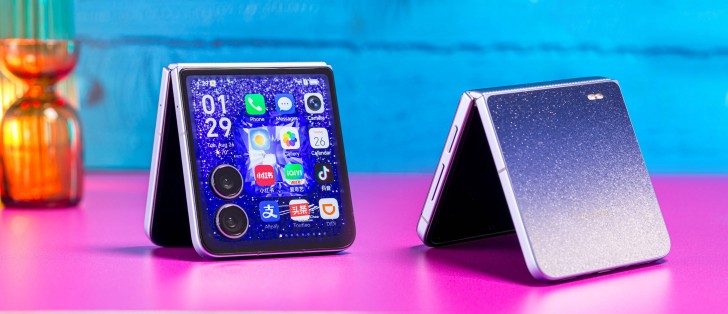
The Honor Magic V Flip 2 has a 6.82-inch LTPO OLED inner screen with a resolution of 2868 x 1232 pixels. It supports up to 120Hz refresh rate, and a rated peak brightness of 5,000 nits. The screen supports 10-bit color depth, 4320Hz PWM dimming, and HDR10+ and Dolby Vision streaming formats.
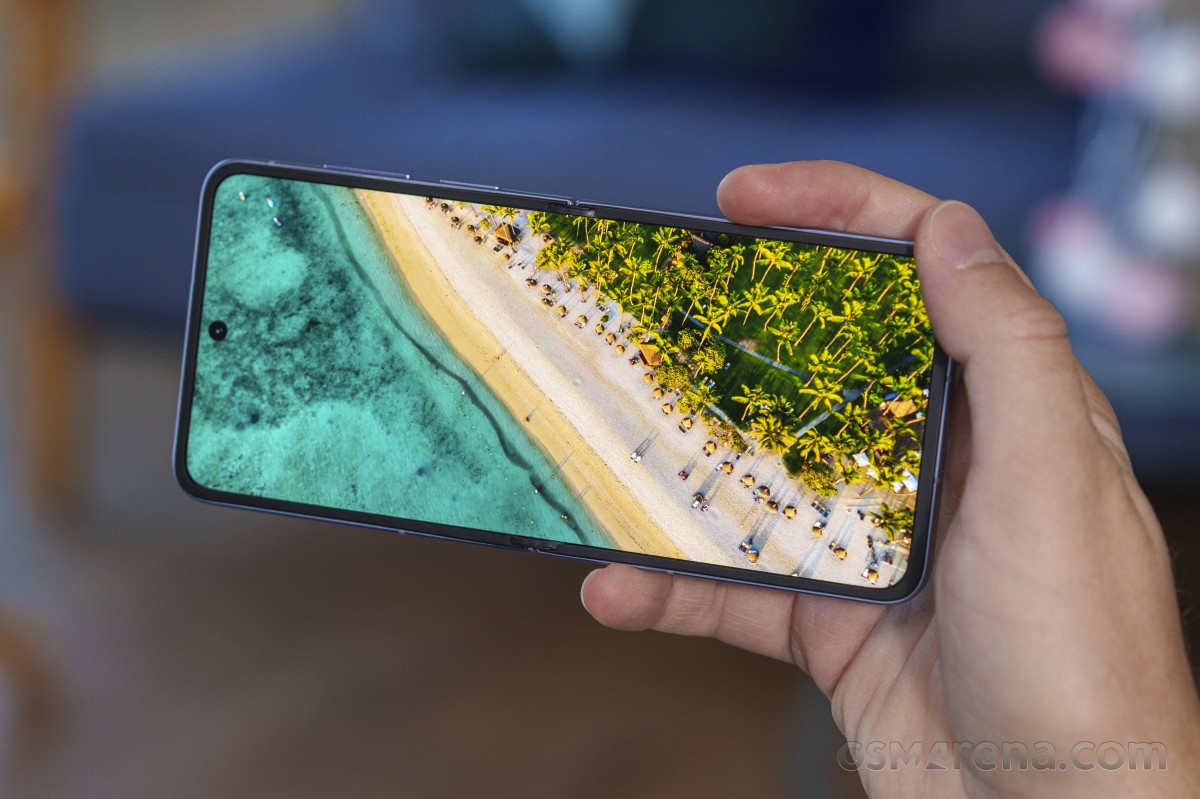
The 4-inch cover screen uses an LTPO OLED panel of 1,200 x 1,092 pixels, and supports up to 120Hz refresh rate, HDR10+ and Dolby Vision streaming. Its rated peak brightness is 3,600 nits.
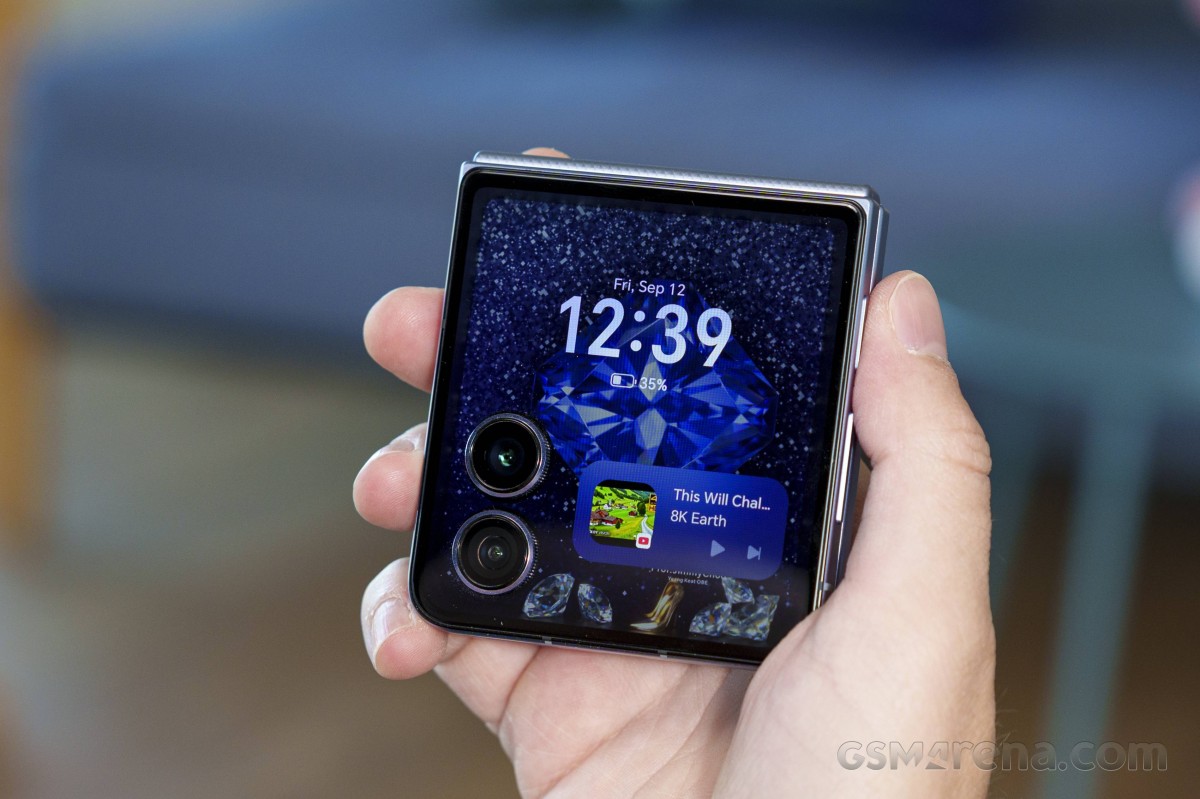
The two displays are very closely matched in terms of brightness and when using the manual control, you will get similar brightness output on either side.
With our test patch taking 75% of the screen real estate, we measured 817 nits of maximum manual and 1,786 nits of maximum automatic brightness for the foldable display. The minimum brightness with a white color was just 1.7 nit.
Then, the cover screen posted similar numbers for maximum manual brightness – 822nits, and minimum brightness – 1.7 nit. But the maximum automatic brightness was much higher at 3,055 nits. Note that these nits were available for only a couple of seconds, after which the screen brightness decreased to approximately 1,800 nits.
Refresh rate
Both screens support up to 120Hz refresh rate and both use LTPO OLED panels, meaning the refresh rate is as dynamic as it can get these days and goes between 1Hz and 120Hz depending on the content. There are three refresh rate modes – Dynamic (up to 120Hz), High (up to 120Hz), and Standard (up to 60Hz).
All these modes dial down to 1Hz for static content, use 30Hz/48Hz/60Hz for 30fps/48fps/60fps videos, 90Hz and 120Hz for benchmarks and games. The Dynamic mode chooses 90Hz for some apps like Google Chrome, while the High will always use the maximum available refresh rate – a.k.a. 120Hz.
HDR and streaming
Both screens are HDR10+ and Dolby Vision certified. Unfortunately, the phone’s Widevine DRM level is L3, meaning most apps will be limited to 480p SD streaming. The only app we saw serve high-res HDR content was YouTube.
The Honor Magic V Flip 2 is powered by a Si/C 5,500mAh battery, a good increase over the 4,800mAh cell in the previous model, and the largest inside a Flip phone so far.
The Magic V Flip 2 posted an Active Use Score of 12:43h, which is quite alright for a device with such a foldable form factor. It did great when it comes to calls, web browsing and video streaming, but the gaming time was average.
The Magic V Flip 2 supports up to 80W fast wired charging and up to 50W wireless charging. The phone ships with an 80W Honor SuperCharge power adapter, and that’s the one we used for our charging test.
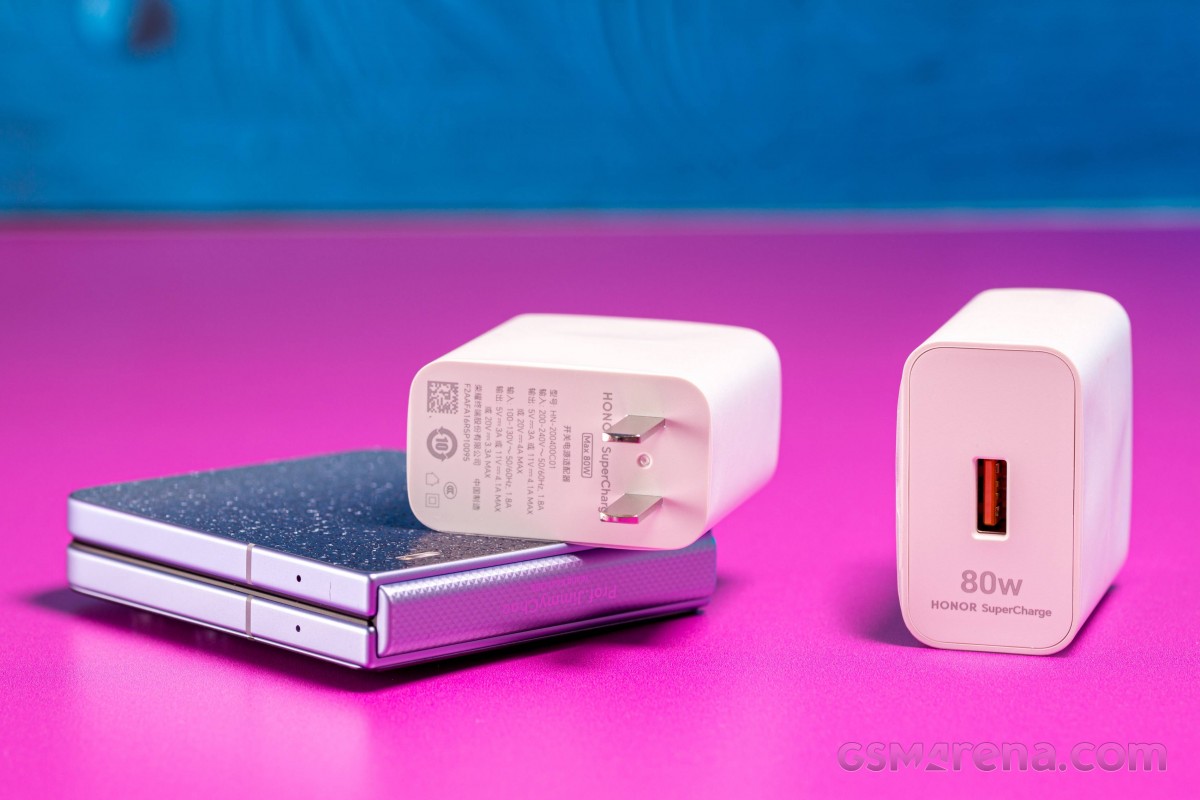
The supplied adapter recharged 38% of the battery in 15 mins, 70% in 30 mins, and we captured 100% charger at the 46-minute mark. That is plenty fast by our book, especially given the large battery capacity of 5,500mAh.
The UI offers a couple of battery optimizations that have become a must for every modern phones – Smart Charging and Smart Battery Capacity (does not charge to 100%). There is also an option for reverse wireless charging.
The Honor Magic V Flip 2 has stereo speakers, two of those. One is located at the bottom of the phone, while the other is front-facing, positioned just above the screen, and serves a dual purpose as an earpiece.
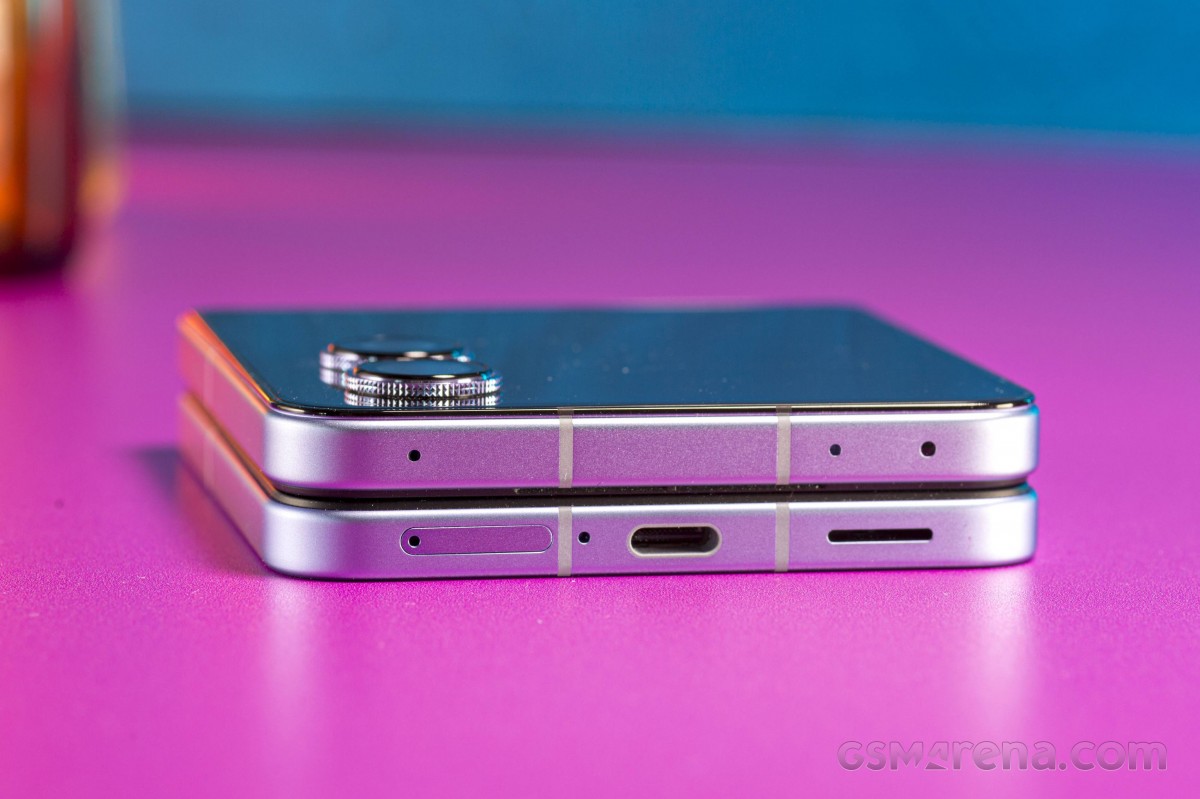
The speakers scored a Very Good mark on our loudness test. The sound quality is average, though, with good vocals, good high-frequency presentation, but minimal thump, if any.
Use the Playback controls to listen to the phone sample recordings (best use headphones). We measure the average loudness of the speakers in LUFS. A lower absolute value means a louder sound. A look at the frequency response chart will tell you how far off the ideal “0db” flat line is the reproduction of the bass, treble, and mid frequencies. You can add more phones to compare how they differ. The scores and ratings are not comparable with our older loudspeaker test. Learn more about how we test here.